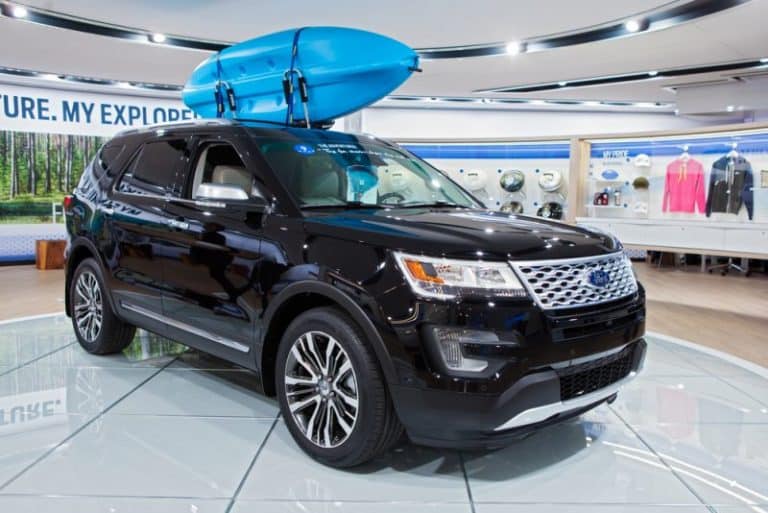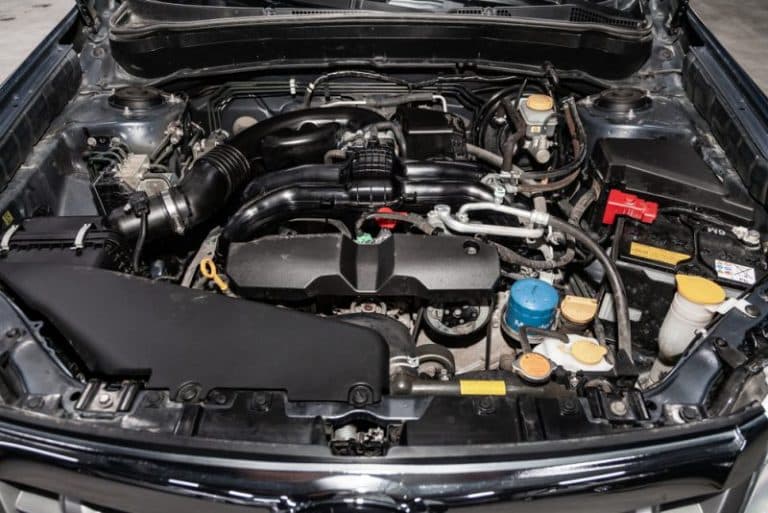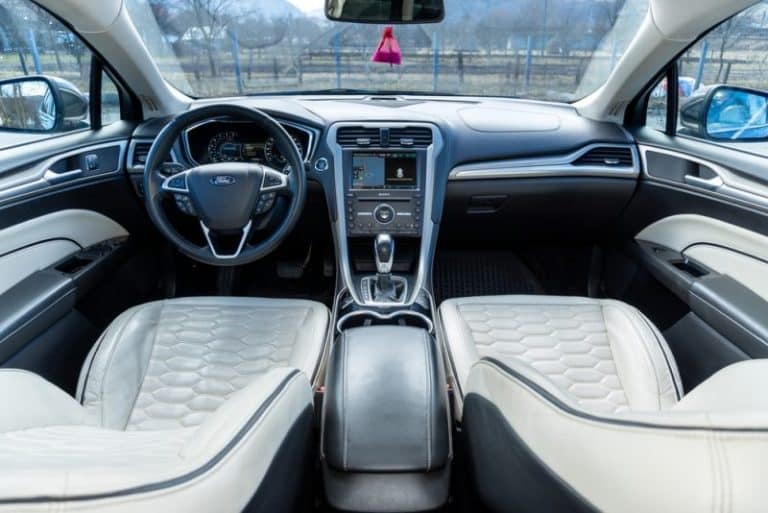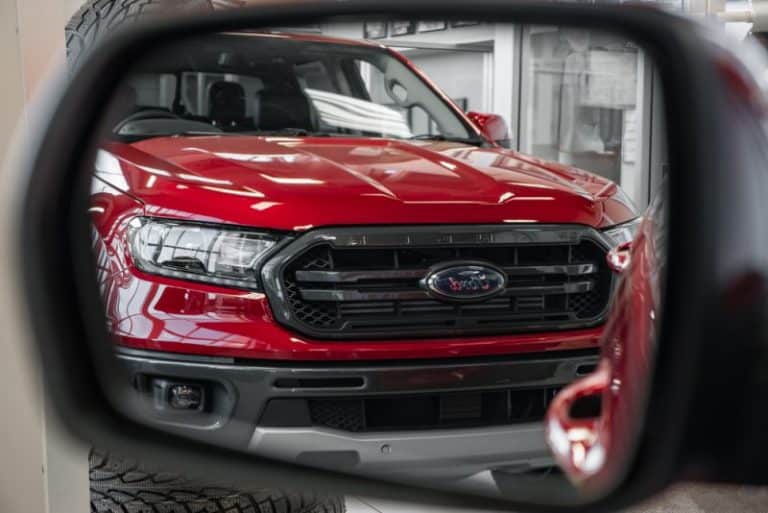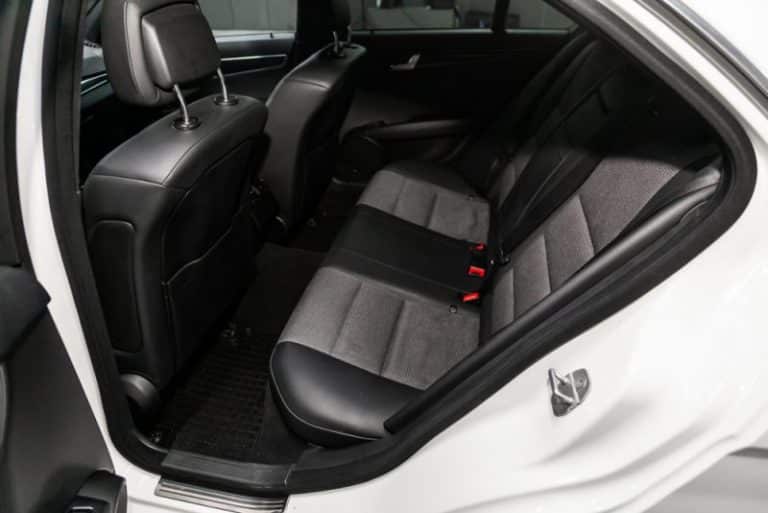How To Know If Ford Edge Is AWD? (Let’s See)
Every car has a system of distributing its engine horsepower to its wheel called the drivetrain.
Without this system, the engine’s power will be useless as it can’t convert to make the vehicle move.
This system comes in different orientations such as front-wheel drive (FWD), rear-wheel drive (RWD), all-wheel drive (AWD), and four-wheel drive (4WD).
it is important you know which drivetrain your car possesses if you need to buy its parts or have it towed.
You can tell if Ford Edge is AWD if it can automatically distribute power between all its wheels to maintain the friction between them and the road. You can confirm this physically by checking if there’s a drive shaft attached to the tail differential beneath the vehicle. If there is, then it is an AWD.
Is My Ford Edge All Wheel Drive?

All ford edges come with the Sport Utility Vehicle (SUV) mileage body style, which is usually equipped with an all-wheel-drive (AWD) powertrain, enabling them to efficiently carry out their functions off-road travel and road-going passenger and cargo vehicles.
Since an all-wheel-drive powertrain is an offshoot of the 4WD, your Ford Edge car is likely an all-wheel drive.
Your Ford Edge’s powertrain structure also gives you an idea of what system your car is.
An AWD is a vehicle with a transversely mounted engine and an axle shaft running from the front axles to the rear axle.
This description may sound complicated, but if you are familiar with your car parts, then a simple look under your car should do the magic.
Latest Edge models like the 2022 Edge Titanium AWD come with an intelligent all-wheel drive (IAWD). Invariably, your car is an AWD if it is one of these.
Running a simple vehicle identification number (VIN) search can also help you tell if your Ford Edge is AWD.
Finally, refer to your owner’s manual or consult a professional auto-mechanic if, after all these, you are still unsure of your vehicle’s drivetrain orientation.
How Do I Know If My Ford Edge Is AWD or FWD?
The Ford Edge car models come with both front-wheel and all-wheel drive in its four trim levels; You can also learn that If Ford Escape Is AWD?
Therefore, to know which drivetrain configuration your Ford edge is equipped with, you will have to follow the conventional methods of identifying drivetrain systems in cars.
The first of these methods is the axle check. The power from your vehicle engine is transferred to the wheels through the axle shafts.
If the axle shaft of your car is connected to the axle of the front wheels, the vehicle is a front-wheel drive, but if it is attached to the front wheels and then runs to the axle of the rear wheels, then it is an all-wheel drive.
The Vehicle Identification Number (VIN) search is another common method of identifying the drivetrain configuration of your Ford Edge.
VIN is a special code assigned to individual vehicles for identification. A simple online search of this number will give you the full details of your car, including the drivetrain.
Follow the steps to perform a VIN search;
- Find a VIN decoder like Carfax or CarProof. These are sites where you can perform a VIN search.
The ones listed here require payment, but there are also free ones that may not provide you with your vehicle’s complete information. - Enter the VIN in the space provided on the site, make a payment if necessary and submit to see the results.
- Go through the results and look for that for the drivetrain. If it comes in abbreviations, FWD is for front-wheel drive, AWD is for all-wheel drive, RWD is for rear-wheel drive, and 4WD or 4×4 is for four-wheel drive.
If you find any of these steps complicated, you can take your car to an auto-mechanic or consult a professional to carry them out for you.
Difference Between AWD and FWD?
The difference between the all-wheel-drive (AWD) and front-wheel drive (FWD) drivetrain configurations is simply the wheels that get the power from the engine.
In an all-wheel-drive vehicle, the engines’ torque is sent to all the wheels making all four wheels capable of propelling the car forward.
In contrast, in a front-wheel-drive car, the power from the engine is sent only to the front tires of the car, making them the only tires capable of propelling the vehicle.
There are conditions in which either a front-wheel-drive or an all-wheel drive is preferable, so your choice of a vehicle with a particular drivetrain depends on the conditions for which you are getting the car.
In choosing a drivetrain, however, it is crucial that you know the pros and cons of both AWD and FWD to know what you are signing in for.
So saying, the advantages of an AWD include:
- Superior traction. AWD vehicles have better grips with road surfaces because the four tires are involved in propelling the car.
As a result, AWD vehicles can continue to move normally even if one or two tires lose their grip on the road surface because of ice, mud, or snow. - Speed and performance. AWD vehicles accelerate faster because of more power transfer from the engine to the road.
- Balanced weight distribution. The vehicle’s weight is better distributed in AWD cars resulting in more consistent handling and even distribution of stress.
The disadvantages of the AWD system include:
- Cost. AWD vehicles are equipped with more components. The costs of these components add up to make the car more expensive.
In addition, a typical AWD system is complex, making repairs and services for these vehicles costly. - Bad fuel economy. Perhaps this is the most glaring con of AWD. Vehicles with this system require and consume more fuel than an FWD or RWD.
- A false sense of security.
The advantages of a front-wheel-drive system include the following:
- Fuel efficiency. A vehicle with this system consumes less fuel than an all-wheel-drive system. The power is reserved, distributing power only to the front wheels.
- Better mileage. Being lighter than an all-wheel vehicle, a car with front-wheel drive will travel more distance under the same conditions.
- More affordability. The less complex nature of these vehicles makes repairs and services easy, thereby making them cheaper to acquire and maintain than all-wheel-drive vehicles.
The cons of the front-wheel-drive system include:
- Inefficiency because power goes to just two wheels. Keeping the vehicle in control will be difficult if one or both tires lose traction. This situation could lead to a crash.
- Less speed and performance. Front-wheel drives perform considerably lower than all-wheel drives because of the comparatively smaller energy supplied to the wheels.
Conclusion
Generally, Ford Edge vehicle models come in FWD and AWD drivetrain configurations, as seen in the 2008 Edge SEL 4dr SUV and 2018 Edge Titanium AWD.
You can tell which is which by the wheels that get the power from the vehicle’s engine, and you can easily figure this out using the common methods of axle checks and VIN search.

